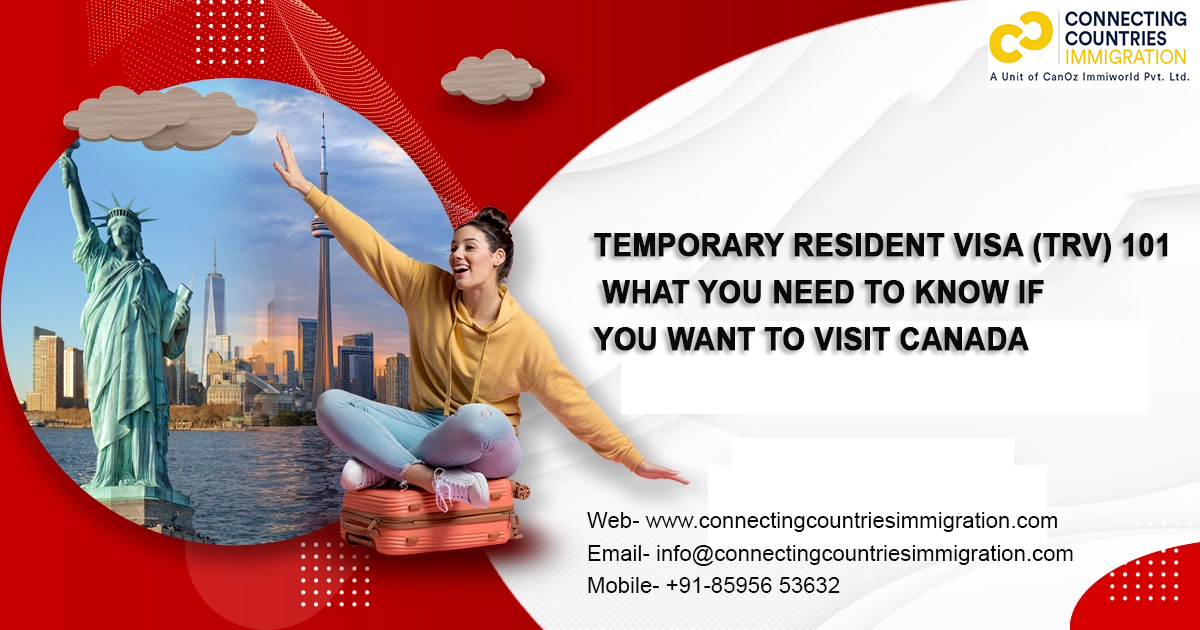Every year, Canada welcomes millions of temporary residents. An individual who wishes to enter Canada temporarily must apply for a Temporary Resident Visa (TRV) unless they are a Canadian citizen or permanent resident, or they are from a visa-exempt nation.
Tourists, temporary foreign workers (individuals with employment permits), and international students (individuals with study permits) are all transitory purposes.
The TRV is issued by a Canadian Immigration Visa Office and proves that the holder has met the requirements for visitor entry to Canada.
It is important to understand that a TRV does not guarantee entrance into Canada or temporary resident status.
What are the TRV’s requirements?
A TRV application consists of the filling up of Immigration, Refugees, and Citizenship Canada (IRCC) forms. Apart from these forms, applicants must:
1) Pay the processing and biometric collecting fees that apply.
2) Submit all relevant supporting documentation with your application.
The following documents may be required for the application:
1) Passport photographs
2) Proof of financial support
3) A copy of your return ticket or itinerary (if applicable)
The documentation required may differ depending on the visa office in charge of your country or region.
How long does the TRV last?
If there is no stamp, date, or document in your passport indicating an expiry date, your temporary resident status will expire six months once you arrive in Canada.
What is the difference between a multiple entry visa and a single entry visa?
The multiple entry visa permits the holder to enter Canada from any nation as many times as needed throughout the visa’s validity period. It is provided with long-term validity to allow genuine visitors to enter Canada. This is the most common kind of TRV.
The multiple entry visa has a maximum validity period of up to ten years, or one month before the travel document’s expiry date.
When an applicant is participating in a one-time special event in Canada for a short period of time, a single-entry visa is considered. Because multiple-entry visas are the norm, any single-entry visa issuance require an explanation from the officer.
What are your options for extending your stay?
To extend your status as a temporary resident, you can apply online or by paper. It is suggested that you apply for an extension of stay in Canada at least 30 days before your current status expires.
If your temporary resident status expires after you file an application for an extension but before you receive a decision, you may remain in Canada under maintained status until your application is decided.
Can you study on a TRV in Canada?
International students, in general, require a study permission to pursue an educational program in Canada. If your program in Canada is less than six months long, you do not need a study permit.
If you want to pursue a program that lasts more than six months, you must apply to a Designated Learning Institution (DLI) in Canada. Once accepted into the program, you must apply for a study permit.
Can you work on a TRV in Canada?
A foreign national must, in general, obtain a work permit in order to work in Canada.
You can apply for a work permit if you have valid temporary residence status. You are likely to have to extend your stay in Canada while you await a decision on your work visa application. In other words, you may be in Canada under maintained status while your application is being processed.
Can my spouse or partner travel to Canada on a TRV if I sponsor them?
Family members or spouses from visa-required countries who have applied for permanent residency under the family class can apply for a TRV to join their sponsor in Canada.
The IRCC’s new approach to spousal TRV applications has resulted in the approval of more than 98% of applications for spouses and their children, allowing them to stay with their families while their PR applications are processed. According to IRCC, processing dates for spousal TRVs will be 30 days.
Can I enter Canada with a TRV and seek for permanent residence later?
Dual intent occurs when a foreign individual applies for permanent residency in Canada and also applies to enter Canada temporarily as a visitor, student, or worker.
It is legal to have dual intent. However, the potential of being granted permanent residency at some point does not relieve you of your need to meet the conditions of a temporary resident, notably the requirement to depart Canada at the conclusion of your authorized stay.



